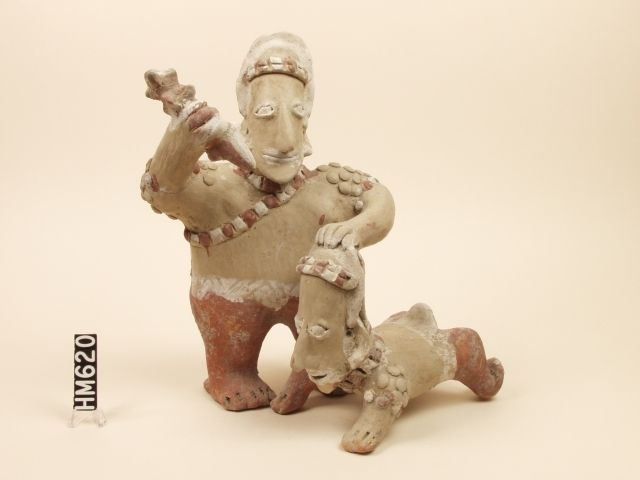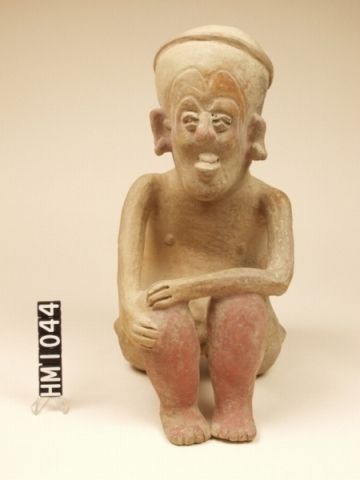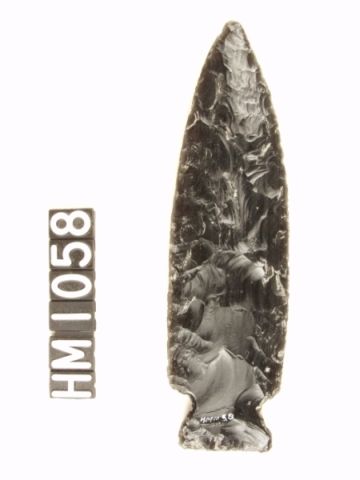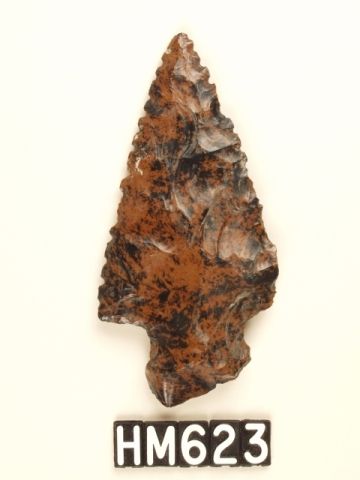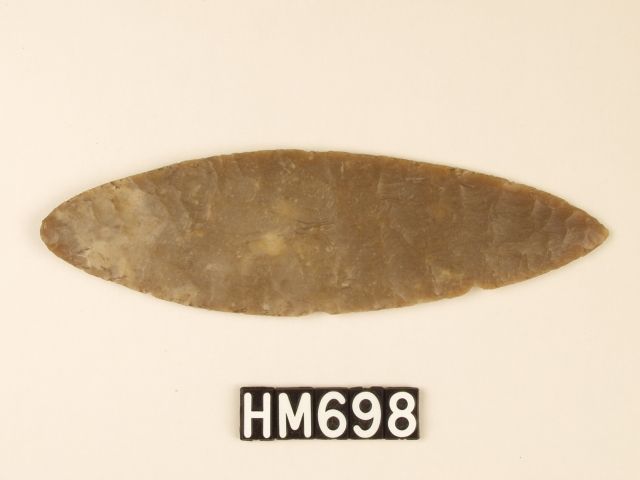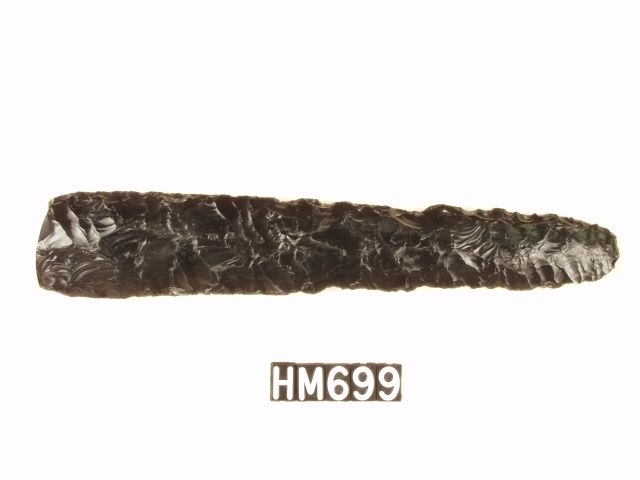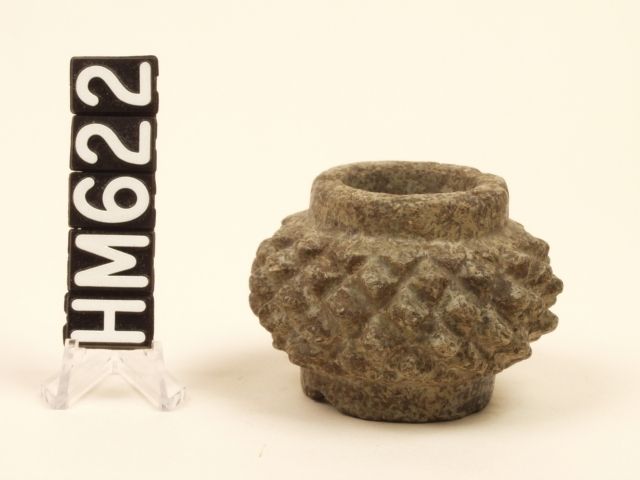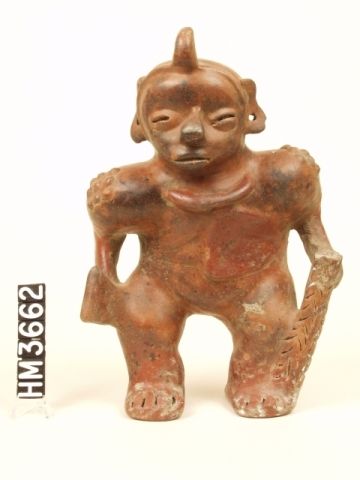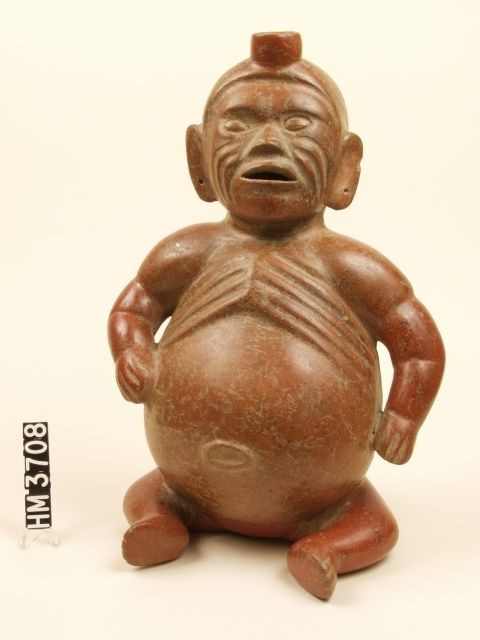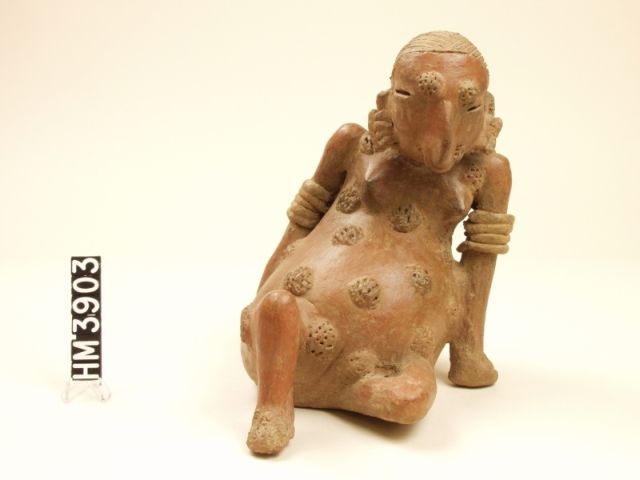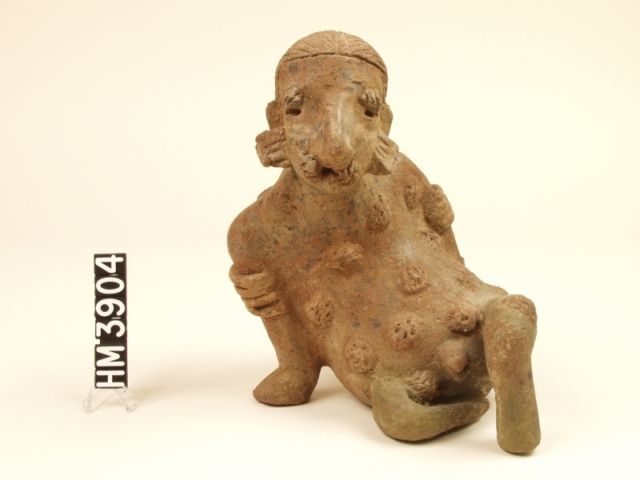West Mexico
A distinctive shaft tomb burial tradition developed in Western Mexico in the present-day states of Jalisco, Nayarit, and extended into Colima. Dating from 300 BCE to 400 CE, ceramic figures, tableaus (groups of figures engaged in everyday activities and house models), vessels along with obsidian and shell jewelry and household implements were buried with the dead. The ceramic figures provide a unique window into the cultures of West Mexico, a region that developed independently from the influences of the Olmec and later groups.
The figures depict individuals engaged in activities and include ball players, musicians, warriors, shaman, and even bound captives. There are also ceramic figures of individuals with pathological conditions, such as tuberculosis and skin diseases, as well as victims of famine. All of these were factors in cultural decline and collapse.
Obsidian Spear Points
William P. Palmer III Collection
Obsidian Knives
William P. Palmer Collection
Nayarit Figures with Sores
200 BC-AD 500
William P. Palmer III Collection
These individuals may be suffering from a form of treponematoses. Figures with skin lesions are among figures places in tombs.

